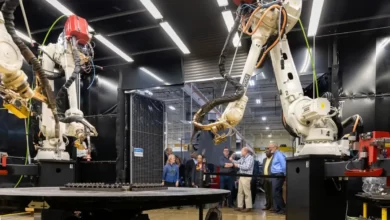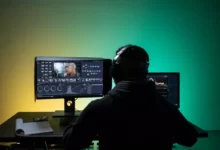Introduction
In an era characterized by rapid technological advancements, it’s no surprise that the realm of historical research has also embraced the power of technology. Gone are the days of poring over dusty manuscripts and faded scrolls. Today, historians and researchers have harnessed the capabilities of technology to digitize and analyze historical documents, ushering in a new era of accessibility and insight. In this article, we will delve into the profound impact of tech in historical research, exploring how digitization and analysis of documents are revolutionizing the way we understand and preserve our past.
The Digital Revolution: Preservation and Accessibility
The convergence of technology and historical research has fundamentally transformed the preservation and accessibility of historical documents. Before the digital age, fragile manuscripts, centuries-old books, and delicate scrolls were confined to temperature-controlled archives, accessible only to a select few researchers. However, the advent of digitization has shattered these limitations.
Digitizing historical documents involves the meticulous process of converting physical artifacts into digital formats. High-resolution scans capture every detail of a document, allowing researchers, students, and enthusiasts from around the world to access these treasures with a few clicks. This democratization of information has redefined the landscape of historical research, breaking down geographical barriers and fostering a global community of scholars.
Unearthing Hidden Insights: Text Analysis and Data Mining

Beyond the realm of preservation, technology has unleashed the potential for groundbreaking analysis of historical texts. Traditional methods of close reading and interpretation are now supplemented with sophisticated text analysis and data mining techniques. By utilizing natural language processing (NLP) algorithms, researchers can uncover patterns, trends, and connections that might have remained hidden to the naked eye.
Take, for instance, the analysis of letters exchanged during a particular period. NLP algorithms can identify recurring themes, sentiments, and even the evolution of language use over time. Such insights provide a richer understanding of the context in which these documents were written, shedding light on social, political, and cultural nuances that might have otherwise been overlooked.
Interactive Learning: Engaging with the Past
Tech-infused historical research doesn’t stop at analysis; it extends to creating immersive learning experiences. Virtual reality (VR) and augmented reality (AR) technologies allow users to step into the shoes of historical figures, walk through ancient landscapes, and interact with virtual artifacts. This innovation has the potential to bridge the gap between academia and the general public, making history an engaging and interactive journey for all.
Imagine being able to explore a digitized version of an ancient city, complete with its bustling markets and grand monuments. With AR glasses, users can superimpose historical images onto their surroundings, bringing the past to life in the present. This type of experiential learning not only captivates audiences but also nurtures a deeper appreciation for history and the role it plays in shaping our world.
Challenges and Considerations

While the integration of tech and historical research is undoubtedly transformative, it’s important to acknowledge the challenges that accompany this evolution. Digital preservation, for instance, poses questions about the long-term stability of digital formats and the potential for data loss due to technological obsolescence. Additionally, the reliance on algorithms and automation raises ethical concerns about the potential for bias in data analysis.
As technology continues to evolve, researchers must also adapt to new tools and methodologies, ensuring that the human touch in historical interpretation isn’t overshadowed by the allure of automation. Balancing the benefits of technology with the preservation of traditional research practices remains a critical consideration.
**1. Digital Preservation and Longevity:
One of the foremost concerns in the digital age is the long-term preservation of digital documents. Unlike physical manuscripts, which can withstand the test of time for centuries, digital files are susceptible to format obsolescence and data degradation. Technological advancements can quickly render certain file formats obsolete, making it challenging to access documents stored in outdated formats. Thus, historians and archivists must continuously monitor and migrate digital collections to ensure their accessibility in the future.
**2. Data Integrity and Authenticity:
Digitization and data analysis rely heavily on the accuracy and authenticity of the source material. The process of digitization itself may introduce errors, and the authenticity of digital documents can be compromised if not managed carefully. Ensuring data integrity requires meticulous quality control measures and the implementation of standards to prevent alterations or tampering.
**3. Ethical and Bias Concerns:
As technology drives the analysis of historical texts, ethical considerations come to the forefront. Algorithms used in text analysis and data mining can inadvertently introduce biases, reflecting the biases inherent in their training data. This potential bias can influence research outcomes, leading to skewed interpretations and reinforcing existing stereotypes. Researchers must be vigilant in identifying and mitigating biases, while also being transparent about their methodologies.
**4. Balance Between Automation and Human Interpretation:
The allure of automation in data analysis can sometimes overshadow the importance of human interpretation. While algorithms can identify patterns and trends, they may lack the nuanced understanding that human historians bring to the table. Striking the right balance between automated analysis and human interpretation is crucial to maintaining the depth and context that historical research requires.
**5. Accessibility and Digital Divide:
While digitization has expanded access to historical documents, it’s important to acknowledge that not everyone has equal access to technology and the internet. The digital divide—uneven access to technology and digital resources—can exclude certain communities from benefiting fully from technological advancements in historical research. Ensuring equitable access to digitized materials is a challenge that must be addressed to prevent further marginalization.
**6. Privacy Concerns:
When dealing with historical documents that contain personal or sensitive information, privacy concerns arise. Digitization can make private information more accessible, raising ethical questions about how to handle and redact sensitive content to protect individuals’ privacy rights.
**7. Technological Rapid Pace:
The pace of technological evolution can be both a boon and a challenge. While it allows for constant innovation and improvement, it also means that researchers need to continually adapt to new tools and methodologies. Keeping up with these changes requires ongoing training and investment of time and resources.
Conclusion
Integration of technology has ushered in a new era of possibilities in the realm of historical research. Digitization has transformed how we preserve and access historical documents, making them available to a global audience. Text analysis and data mining have provided unprecedented insights into the past, enriching our understanding of historical contexts. Interactive technologies like VR and AR have redefined how we engage with history, making it an immersive experience for all.
The role of tech in historical research is not without its challenges, but the potential for innovation and discovery far outweighs the obstacles. As we navigate this evolving landscape, it’s essential to strike a balance between technological advancements and the core principles of rigorous historical inquiry. By doing so, we can ensure that the treasures of the past continue to enlighten and inspire generations to come.









